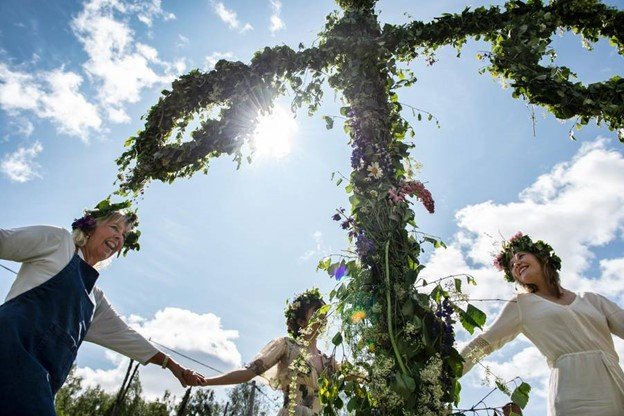Midsommer
By: Mikaela Rosvall
After the long, dark, and sometimes extremely cold winters, the arrival of summer is one of the most celebrated holidays in Sweden. The day is known as Midsommar, or Midsummer, and is officially on June 24th (Midsummer Day) but the festivities take place anytime between June 20th and June 26th. The holiday observes the feast day of St. John the Baptist as well as the much older pagan (pre-Christian) celebration of the summer solstice—the longest day of the year.
The Midsummer festival is a magical weekend of feast, drink, dance and merriment. Traditionally, flowers are gathered and made into wreaths and crowns to be worn by the festivalgoers. Pickled herring with new potatoes is the customary dish, followed by lots of fresh strawberries for dessert. No Swedish holiday is complete without one or several shots of snaps (or schnapps)—typically chilled Akvavit or vodka, accompanied by a drinking song or two.
[Photo credit: Anna Hållams/imagebank.sweden.se]
Midsummer is very centered around all things nature and is most recognized for the decorating of the Midsummer Pole—better known as the Maypole. The name comes from the Swedish word Maja, which means “to decorate with leaves”. Festivalgoers of all ages dance around the Maypole and jump around like frogs (No, really!) while the more serious participants display their traditional folk costumes and folk dance.
Midsummer is a truly joyful holiday that everyone should experience at least once in a lifetime.


